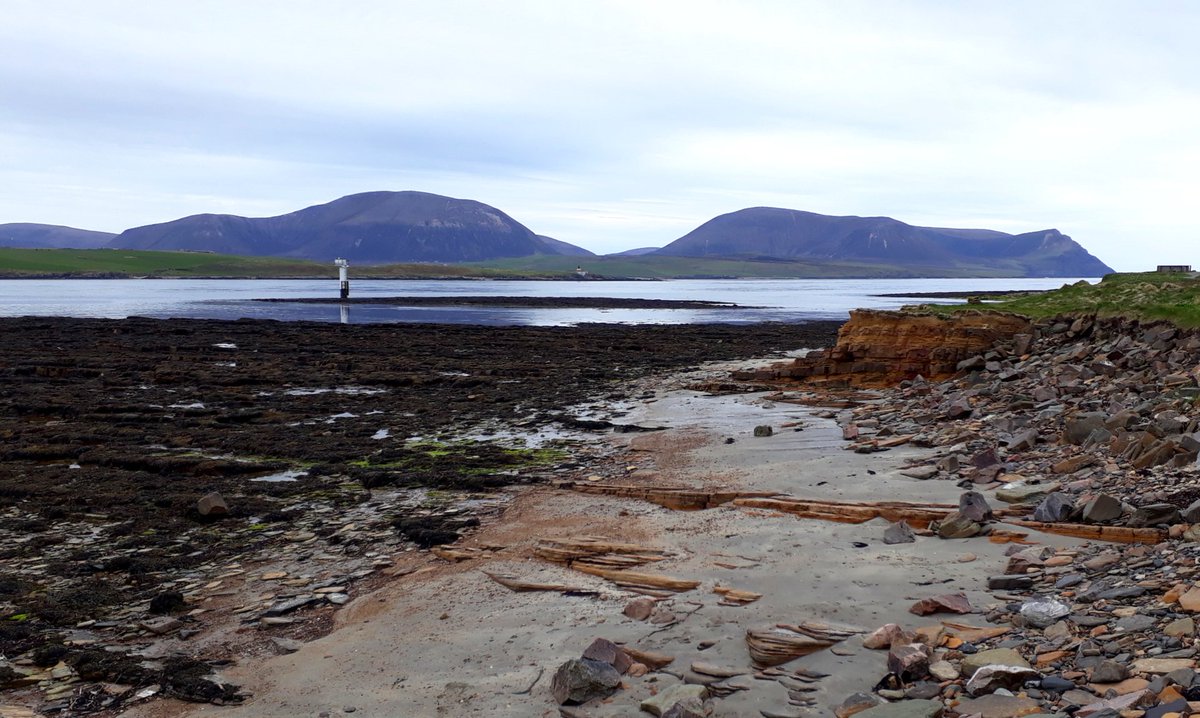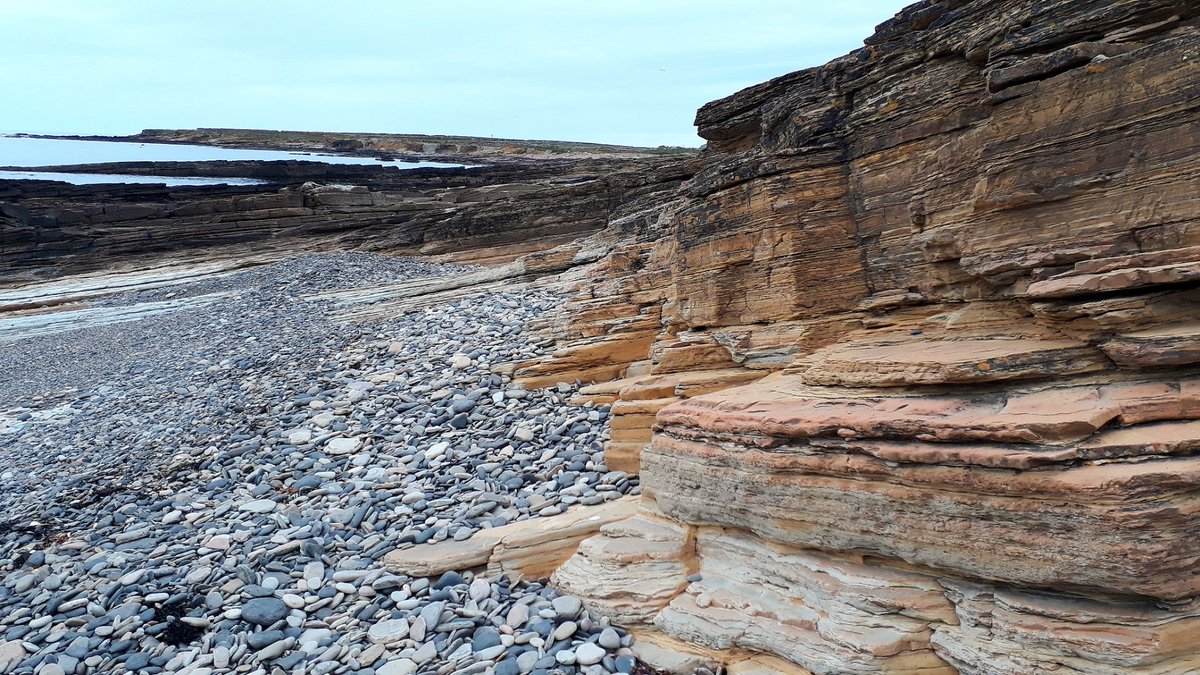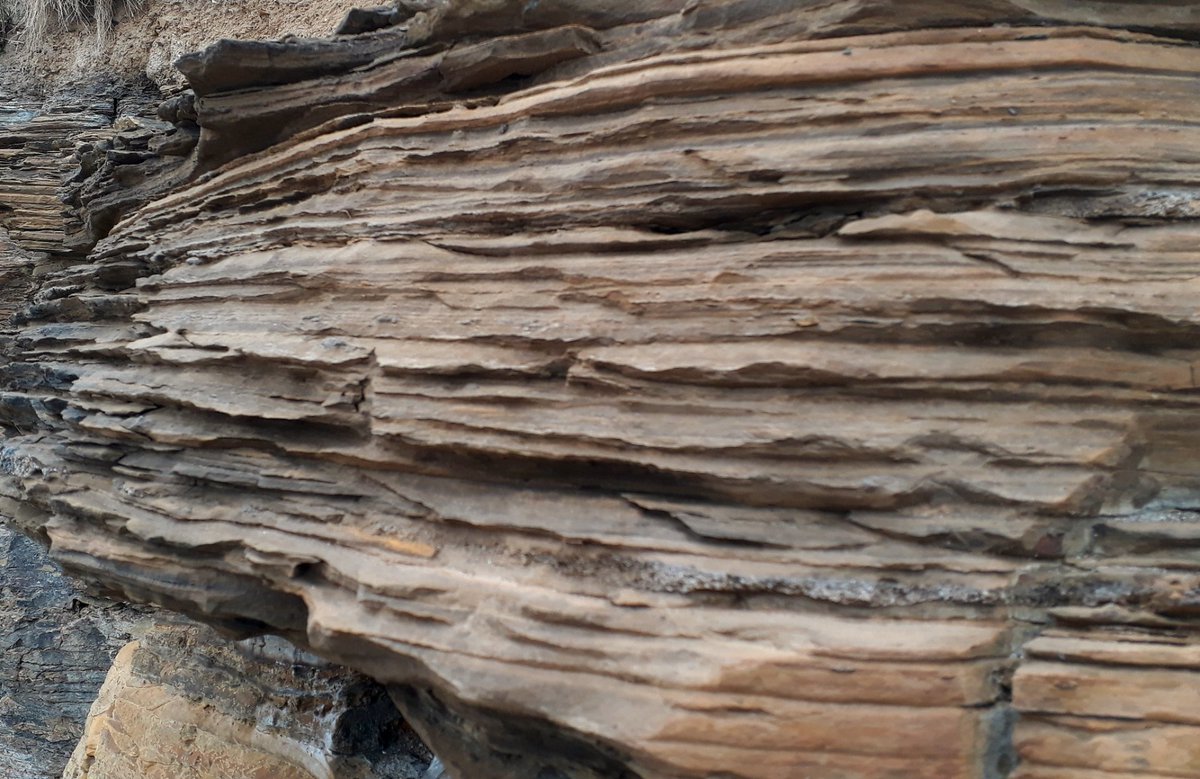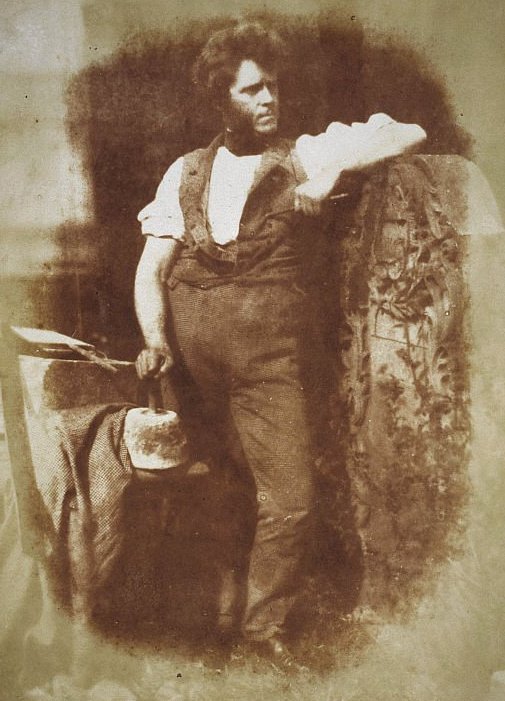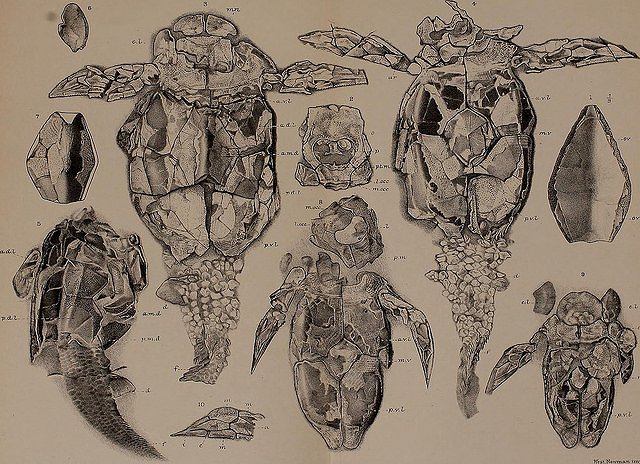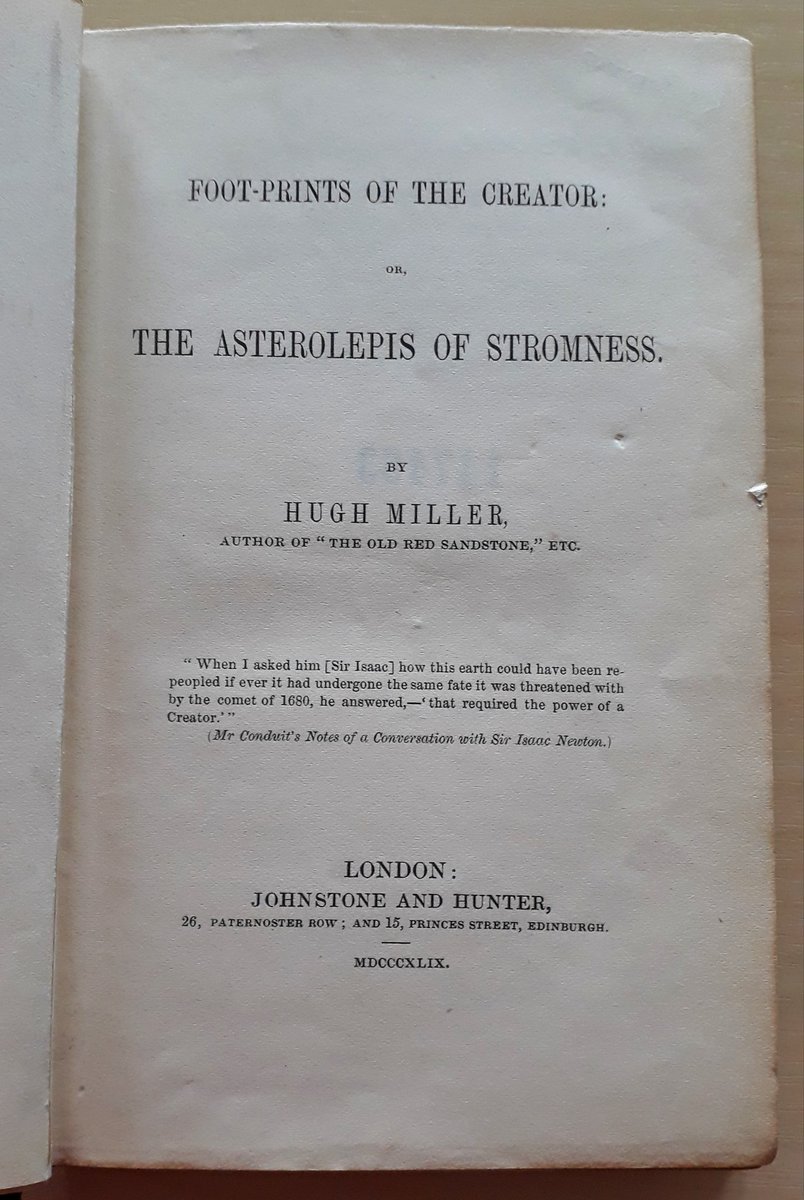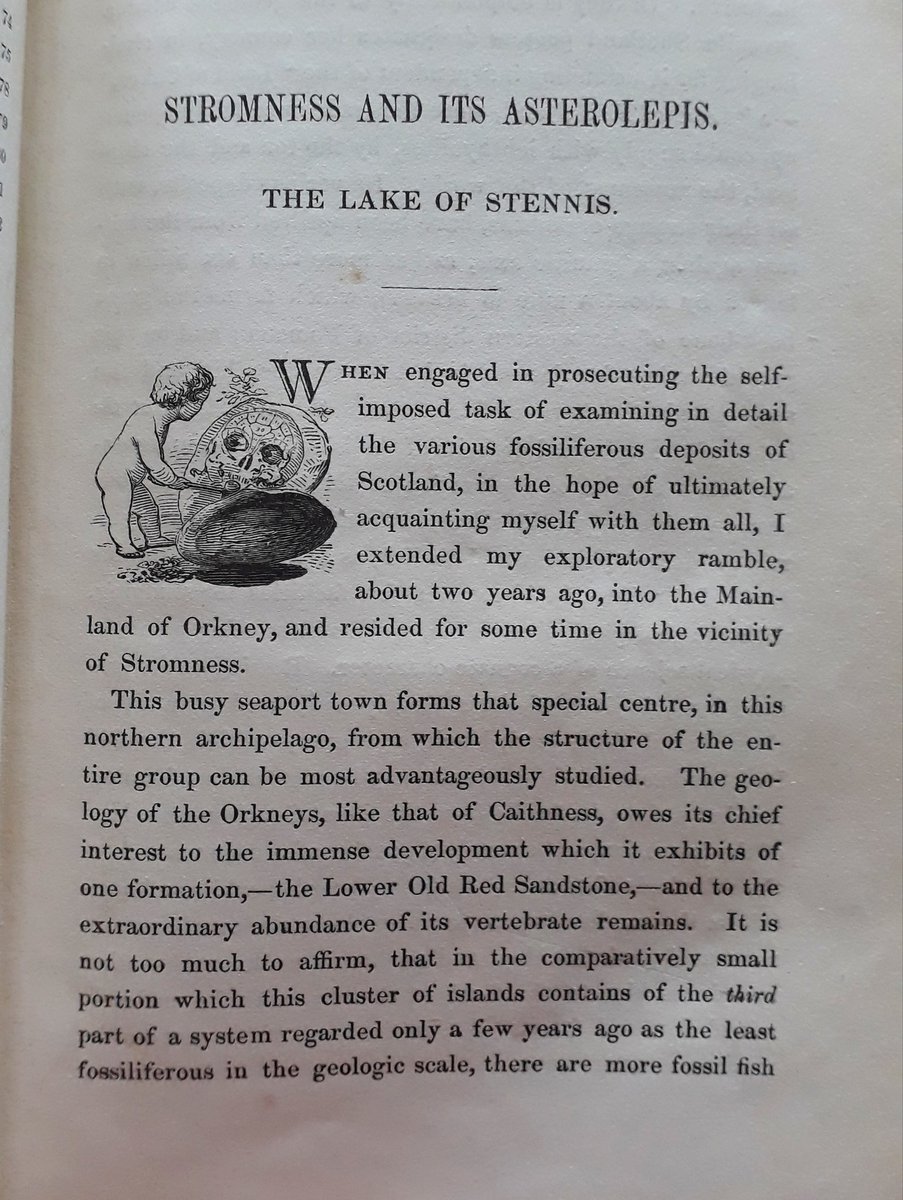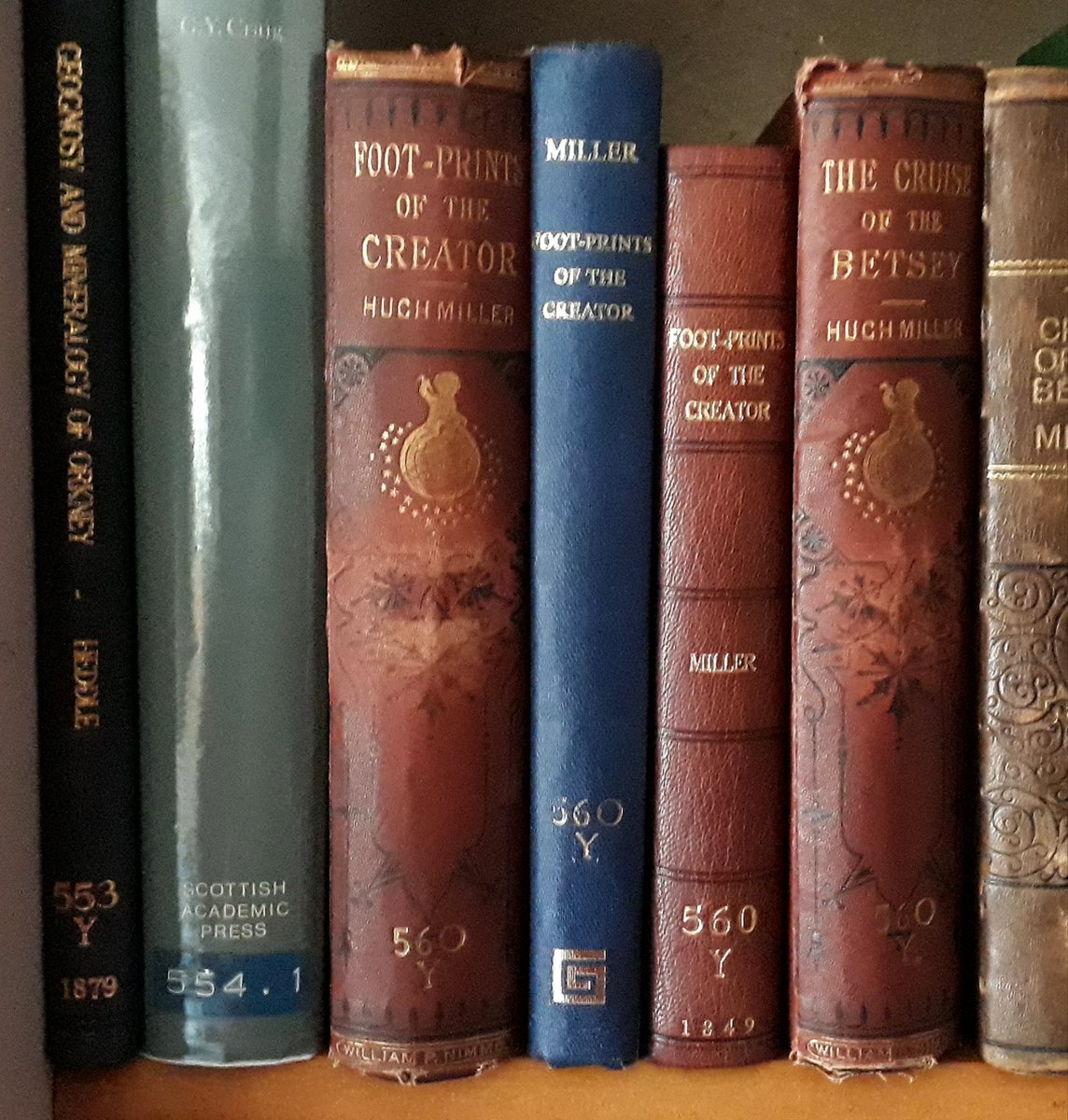This is the west shore of Stromness looking across to the islands of Graemsay and Hoy.
In 1846 this was the site of a remarkable discovery.
In 1846 this was the site of a remarkable discovery.
The rocks here are Old Red Sandstone, rock that was formed during the Devonian period which was between 419 and 359 million years ago.
Sandstone is one of the best rocks for finding fossils.
Sandstone is one of the best rocks for finding fossils.
In 1846 the writer, stonemason and geologist Hugh Miller travelled to #Orkney from his home in Cromarty and went fossil hunting along the Stromness shore.
He found this. It& #39;s the spine of the median dorsal plate of an Asterolepis. An asterolepis is a placoderm or prehistoric armoured fish first discovered in 1840.
(Photo from Stromness Museum)
(Photo from Stromness Museum)
They looked like this. It was an important find. The creature became extinct at the end of the Devonian period meaning the fossil could be 359 million years old. Miller described his fossil as & #39;the oldest vertebrate remains yet discovered in Orkney.& #39;
The species became known as Homosteus Milleri.
The fossil also inspired Miller& #39;s 1849 book & #39;The Foot-prints of the Creator: or, The Asterolepis of Stromness.& #39;
Charles Darwin was a contemporary and correspondent of Miller and he read the book in 1849.
The fossil also inspired Miller& #39;s 1849 book & #39;The Foot-prints of the Creator: or, The Asterolepis of Stromness.& #39;
Charles Darwin was a contemporary and correspondent of Miller and he read the book in 1849.
We have several copies of Miller& #39;s book in the Archives including a copy of the original 1849 edition.
The fossil can still be seen in the @StromnessMuseum just a short distance from the Stromness shore where it had been buried for more than 359 million years.
The fossil can still be seen in the @StromnessMuseum just a short distance from the Stromness shore where it had been buried for more than 359 million years.

 Read on Twitter
Read on Twitter